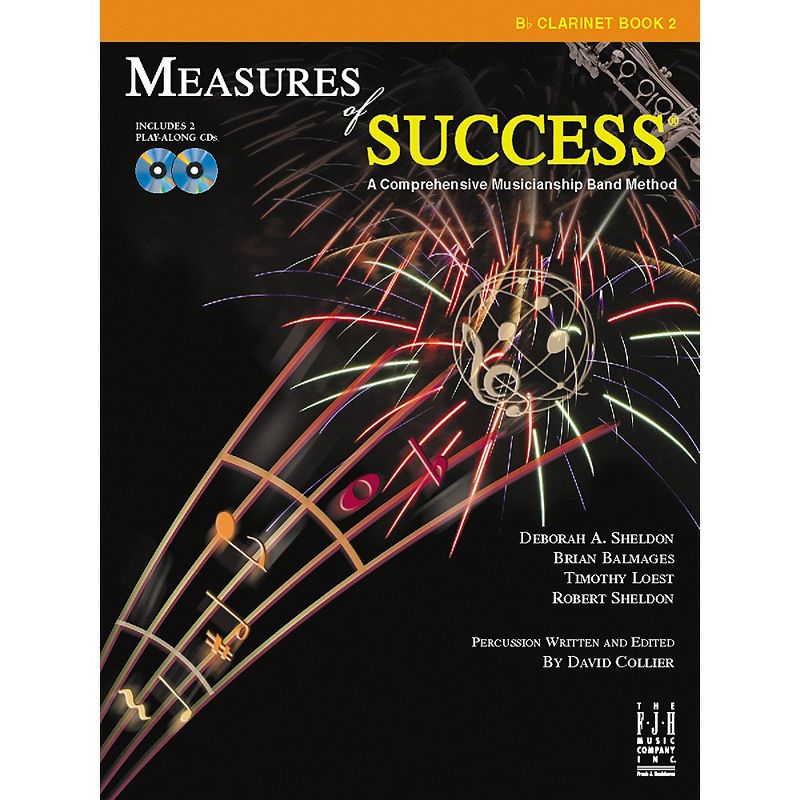FJH Music Measures of Success Electric Bass Book 2
Dimensions (Overall): 12.2 inches (L), .4 inches (H) x 8.7 inches (W)Weight: .55 poundsGenre: Method booksCompatible With: GuitarWarranty: No Applicable Warranty. To obtain a copy of the manufacturer's or supplier's warranty for this item prior to purchasing the item, Measures of Success is divided into six chapters (Opus 1 through 6). Each "Opus" is followed by a full-page assessment. Students are able to attain achievable benchmarks throughout the method, which keeps them motivated, excited, and playing their instruments. Music history is presented simultaneously with art, literature, and world history, giving students a broad picture of social and artistic events of a certain time period. Composer pictures, artists, paintings, authors, literary works, world history, and fun facts are presented throughout the method. This strongly supports the National Standards and encourages cross-disciplinary study in music education. Best of all, it is contained in the text so directors do not need to do additional research. Critical ListeningMusical examples are provided on the CDs and students are asked to critique performances, identify musical elements including time signature, tempo, articulation, and more. Each critical listening exercise is correlated with material the student hasjust learned. Playing By Ear - Easy tunes are introduced on the CDs and students are encouraged to learn them on their own. They can then play along with an accompaniment that is provided. Composing / ArrangingProgressive lessons move from simple composition into arranging, and students are eventually introduced to improvisation in an easy and fun way. Theory and Terminology - Written exercises reinforce a multitude of concepts. To establish a solid foundation, students are often required to look through previous chapters in addition to the current Opus. PLAY-ALONG CDS: A NEW LEVEL OF ACCOMPANIMENT - All exercises are played twice by professional musicians-first with the student line, then the accompaniment alone. Accompaniments include live musicians, incredible orchestrations, and a wide variety of styles including concert band, full orchestra, rock, Latin, jazz, funk, country, electronic, and world music. Classical pieces are presented with accompaniments that put them in their original context. Percussion-specific CDs let percussionists hear a characteristic sound of every Instrument while the winds are moved into the background. NEW FEATURES IN BOOK 2 - Review - a comprehensive Recapitulation chapter that reviews material from Book 1Sight Reading - correlated with each OpusWarm-ups - a full page of long tones and choralesfor individual, section, or full band useImprovisation - five improvisation studies with flexibleperformance optionsWorld music - representing music from 20 countriesacross the globeComposers - over 35 composers, including 14 newfeatured composersNew cross-curricular opportunities - ties to many literary works included in school curricula
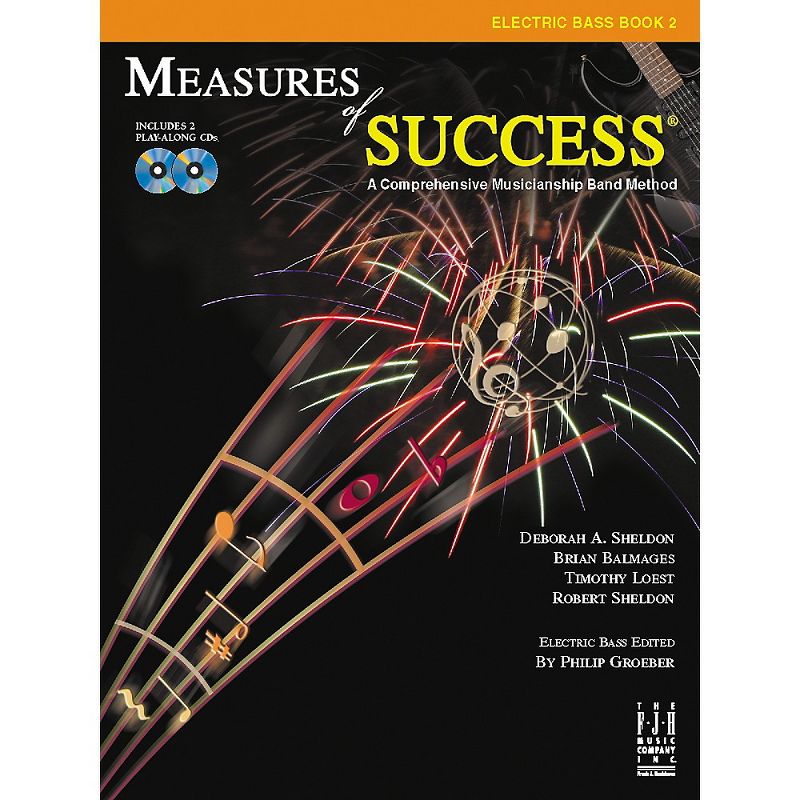
FJH Music Measures of Success Clarinet Book 1
Dimensions (Overall): 12.1 inches (L), .1 inches (H) x 8.9 inches (W)Weight: .55 poundsGenre: Method booksCompatible With: ClarinetWarranty: No Applicable Warranty. To obtain a copy of the manufacturer's or supplier's warranty for this item prior to purchasing the item, & bull; Deborah A. Sheldon & bull; Brian Balmages & bull; Timothy Loest & bull; Robert Sheldon & bull; Percussion Written and EditedMeasures of Success Clarinet Book 1 is part of FJH Music's Measures of Success series which was created to ignite musical curiosity, to unite conceptual knowledge with performance skills, to foster understanding of the many ways that people share and interact with music, and to assess each student's continued musical growth. Comprehensive musicianship - While there are differing opinions on starting systems, directors agree that the music itself is the most important component of a method. Every exercise in Measures of Success has been sequenced to promote optimal development through great musical content. Creative titles stimulate the imagination, musicianship challenges promote expressive playing, and special attention is paid to important concepts such as phrasing. In addition, students will enjoy full band arrangements and original compositions by renowned composers Brian Balmages and Robert Sheldon. Directors will quickly discover that this performance-based method also introduces students to critical listening, composing, conducting, music history, and other elements that bring about a deeper understanding of music. Establishing Short and Long Term Goals - Measures of Success is divided into six chapters (Opus 1 through 6). Each "Opus" is followed by a full-page assessment. Students are able to attain achievable benchmarks throughout the method, which keeps them motivated, excited, and playing their instruments. History and Cross-Curriculum Presented Together - Music history is presented simultaneously with art, literature, and world history, giving students a broad picture of social and artistic events of a certain time period. Composer pictures, artists, paintings, authors, literary works, world history, and fun facts are presented throughout the method. This strongly supports the National Standards and encourages cross-disciplinary study in music education. Best of all, it is contained in the text so directors do not need to do additional research. Encore! - Assesment Built In To Each Student Book - Following each Opus is a full page "Encore!" designed to assess skills and knowledge addressed in the Opus. This gives directors clear tools for accountability and helps measure student progress. Critical Listening-Musical examples are provided on the CDs and students are asked to critique performances, identify musical elements including time signature, tempo, articulation, and more. Each critical listening exercise is correlated with material the student has just learned. Playing By Ear-Easy tunes are introduced on the CDs and students are encouraged to learn them on their own. They can then play along with an accompaniment that is provided. Composing/Arranging-Progressive lessons move from simple composition into arranging, and students are eventually introduced to improvisation in an easy and fun way. Theory and Terminology-Written exercises reinforce a multitude of concepts. To establish a solid foundation, students are often required to look through previous chapters in addition to the current Opus. Performance-Musical exercises are designed to showcase what students have learned in each Opus. They are ideal for performance assessment and are also appropriate for home concerts. Starting Systems - Sounds Before SymbolsMany directors advocate the practice of playing before seeing notation, a critical component of getting students to connect the instrument with their ear. Book 1 accommodates this growing philosophy with the inclusion of an optional starting page that gets students playing before jumping into the challenges of notation. In no time, students are playing familiar tunes and even composing, all before encountering formal music notation. Focus On Sequencing, Pacing, and ReinforcementThe expertise of band director Timothy Loest and Professor of Music Education Deborah A

FJH Music Measures of Success F Horn Book 2
Dimensions (Overall): 12.0 inches (L), .2 inches (H) x 9.0 inches (W)Weight: .59 poundsGenre: Method booksCompatible With: French HornWarranty: No Applicable Warranty. To obtain a copy of the manufacturer's or supplier's warranty for this item prior to purchasing the item, Measures of Success is divided into six chapters (Opus 1 through 6). Each "Opus" is followed by a full-page assessment. Students are able to attain achievable benchmarks throughout the method, which keeps them motivated, excited, and playing their instruments. Music history is presented simultaneously with art, literature, and world history, giving students a broad picture of social and artistic events of a certain time period. Composer pictures, artists, paintings, authors, literary works, world history, and fun facts are presented throughout the method. This strongly supports the National Standards and encourages cross-disciplinary study in music education. Best of all, it is contained in the text so directors do not need to do additional research. Critical Listening - Musical examples are provided on the CDs and students are asked to critique performances, identify musical elements including time signature, tempo, articulation, and more. Each critical listening exercise is correlated with material the student hasjust learned. Playing By Ear - Easy tunes are introduced on the CDs and students are encouraged to learn them on their own. They can then play along with an accompaniment that is provided. Composing / Arranging - Progressive lessons move from simple composition into arranging, and students are eventually introduced to improvisation in an easy and fun way. Theory and Terminology - Written exercises reinforce a multitude of concepts. To establish a solid foundation, students are often required to look through previous chapters in addition to the current Opus. PLAY-ALONG CDS: A NEW LEVEL OF ACCOMPANIMENTAll exercises are played twice by professional musicians-first with the student line, then the accompaniment alone. Accompaniments include live musicians, incredible orchestrations, and a wide variety of styles including concert band, full orchestra, rock, Latin, jazz, funk, country, electronic, and world music. Classical pieces are presented with accompaniments that put them in their original context. Percussion-specific CDs let percussionists hear a characteristic sound of every Instrument while the winds are moved into the background. NEW FEATURES IN BOOK 2 - Review - a comprehensive Recapitulation chapter that reviews material from Book 1Sight Reading - correlated with each OpusWarm-ups - a full page of long tones and choralesfor individual, section, or full band useImprovisation - five improvisation studies with flexibleperformance optionsWorld music - representing music from 20 countriesacross the globeComposers - over 35 composers, including 14 newfeatured composersNew cross-curricular opportunities - ties to many literary works included in school curricula
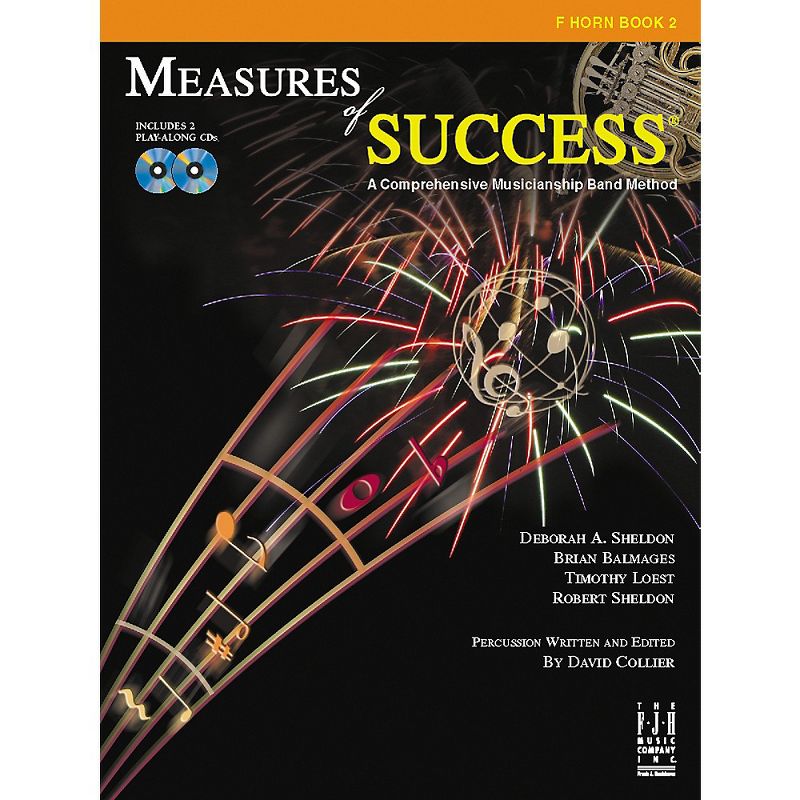
FJH Music Measures of Success Trombone Book 1
Dimensions (Overall): 11.7 inches (L), .4 inches (H) x 8.8 inches (W)Weight: .65 poundsGenre: Method booksCompatible With: TromboneWarranty: No Applicable Warranty. To obtain a copy of the manufacturer's or supplier's warranty for this item prior to purchasing the item, Measures of Success is divided into six chapters (Opus 1 through 6). Each "Opus" is followed by a full-page assessment. Students are able to attain achievable benchmarks throughout the method, which keeps them motivated, excited, and playing their instruments. Music history is presented simultaneously with art, literature, and world history, giving students a broad picture of social and artistic events of a certain time period. Composer pictures, artists, paintings, authors, literary works, world history, and fun facts are presented throughout the method. This strongly supports the National Standards and encourages cross-disciplinary study in music education. Best of all, it is contained in the text so directors do not need to do additional research. PLAY-ALONG CDS: A NEW LEVEL OF ACCOMPANIMENT - All exercises are played twice by professional musicians-first with the student line, then the accompaniment alone. Accompaniments include live musicians, incredible orchestrations, and a wide variety of styles including concert band, full orchestra, rock, Latin, jazz, funk, country, electronic, and world music. Classical pieces are presented with accompaniments that put them in their original context. Percussion-specific CDs let percussionists hear a characteristic sound of every Instrument while the winds are moved into the background. Book 1: - Unique chapter organization provides a goal-oriented format6 full-page assessments include:Critical Listening Playing By Ear Theory and Terminology Composing / Arranging PerformanceWealth of classical and world music representing over 20 composers and 17 countries15 pieces for full bandDuets, rounds, & 2 solos with piano accompaniment2 Play-Along CDs feature demo and performancetracks with professional musiciansFeatured in SmartMusic, the award-winning learning softwareCorrelates with art and world historyIncorporates the National Standards for MusicEducationAdditional features including conducting, rhythm review, clapping exercises, scales, and more!
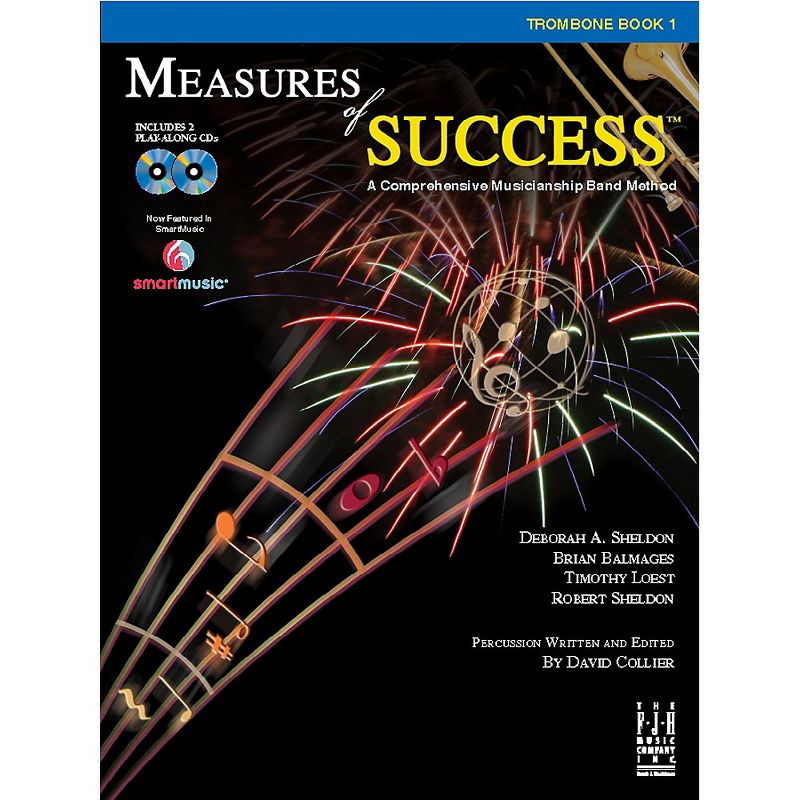
FJH Music Measures of Success B-flat Tenor Saxophone Book 2
Dimensions (Overall): 12.0 inches (L), .12 inches (H) x 9.0 inches (W)Weight: .6 poundsGenre: Method booksCompatible With: SaxophoneWarranty: No Applicable Warranty. To obtain a copy of the manufacturer's or supplier's warranty for this item prior to purchasing the item, Measures of Success is divided into six chapters (Opus 1 through 6). Each "Opus" is followed by a full-page assessment. Students are able to attain achievable benchmarks throughout the method, which keeps them motivated, excited, and playing their instruments. Music history is presented simultaneously with art, literature, and world history, giving students a broad picture of social and artistic events of a certain time period. Composer pictures, artists, paintings, authors, literary works, world history, and fun facts are presented throughout the method. This strongly supports the National Standards and encourages cross-disciplinary study in music education. Best of all, it is contained in the text so directors do not need to do additional research. Critical Listening - Musical examples are provided on the CDs and students are asked to critique performances, identify musical elements including time signature, tempo, articulation, and more. Each critical listening exercise is correlated with material the student hasjust learned. Playing By Ear - Easy tunes are introduced on the CDs and students are encouraged to learn them on their own. They can then play along with an accompaniment that is provided. Composing / Arranging - Progressive lessons move from simple composition into arranging, and students are eventually introduced to improvisation in an easy and fun way. Theory and Terminology - Written exercises reinforce a multitude of concepts. To establish a solid foundation, students are often required to look through previous chapters in addition to the current Opus. PLAY-ALONG CDS: A NEW LEVEL OF ACCOMPANIMENTAll exercises are played twice by professional musicians-first with the student line, then the accompaniment alone. Accompaniments include live musicians, incredible orchestrations, and a wide variety of styles including concert band, full orchestra, rock, Latin, jazz, funk, country, electronic, and world music. Classical pieces are presented with accompaniments that put them in their original context. Percussion-specific CDs let percussionists hear a characteristic sound of every Instrument while the winds are moved into the background. NEW FEATURES IN BOOK 2 - Review - a comprehensive Recapitulation chapter that reviews material from Book 1Sight Reading - correlated with each OpusWarm-ups - a full page of long tones and choralesfor individual, section, or full band useImprovisation - five improvisation studies with flexibleperformance optionsWorld music - representing music from 20 countriesacross the globeComposers - over 35 composers, including 14 newfeatured composersNew cross-curricular opportunities - ties to many literary works included in school curricula
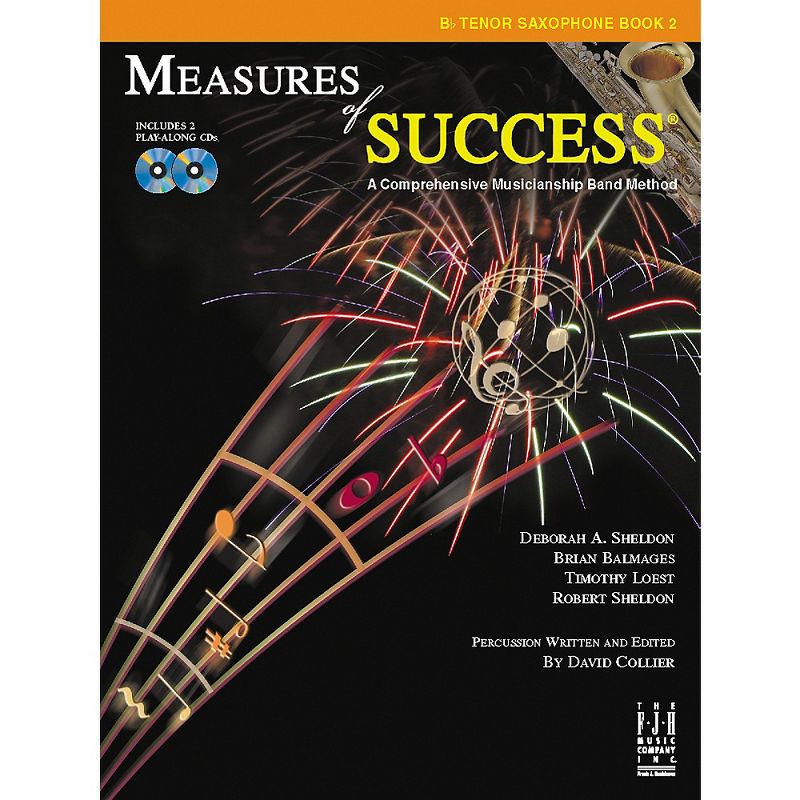
FJH Music New Directions For Strings, Viola Book 1
Dimensions (Overall): 11.6 inches (L), .7 inches (H) x 8.7 inches (W)Weight: .53 poundsGenre: Method booksCompatible With: ViolaWarranty: No Applicable Warranty. To obtain a copy of the manufacturer's or supplier's warranty for this item prior to purchasing the item, & bull; Based on more than 100 years of combined teaching experience & bull; Written by a team of pedagogues representing each of the four stringed instruments & bull; Supplemental music by Soon Hee Newbold and Elliot Del Borgo & bull; Includes 2 Play-Along CDs with each student bookThe FJH Music Company is proud to present Books 1 and 2 of New Directions for Strings, the first method ever written by a team of pedagogues representing each of the four stringed instruments. With more than 100 years of combined teaching experience, the authors of New Directions for Strings explore many new directions, including equal integration of all the instruments, a tetrachord-based approach to support proper development of the left hand, and ensemble opportunities that occur throughout the book.

FJH Music Measures of Success Trumpet Book 2
Dimensions (Overall): 11.7 inches (L), .3 inches (H) x 8.5 inches (W)Weight: .55 poundsGenre: Method booksCompatible With: Most TrumpetsWarranty: No Applicable Warranty. To obtain a copy of the manufacturer's or supplier's warranty for this item prior to purchasing the item, Measures of Success is divided into six chapters (Opus 1 through 6). Each "Opus" is followed by a full-page assessment. Students are able to attain achievable benchmarks throughout the method, which keeps them motivated, excited, and playing their instruments. Music history is presented simultaneously with art, literature, and world history, giving students a broad picture of social and artistic events of a certain time period. Composer pictures, artists, paintings, authors, literary works, world history, and fun facts are presented throughout the method. This strongly supports the National Standards and encourages cross-disciplinary study in music education. Best of all, it is contained in the text so directors do not need to do additional research. Critical ListeningMusical examples are provided on the CDs and students are asked to critique performances, identify musical elements including time signature, tempo, articulation, and more. Each critical listening exercise is correlated with material the student hasjust learned. Playing By Ear - Easy tunes are introduced on the CDs and students are encouraged to learn them on their own. They can then play along with an accompaniment that is provided. Composing / ArrangingProgressive lessons move from simple composition into arranging, and students are eventually introduced to improvisation in an easy and fun way. Theory and Terminology - Written exercises reinforce a multitude of concepts. To establish a solid foundation, students are often required to look through previous chapters in addition to the current Opus. PLAY-ALONG CDS: A NEW LEVEL OF ACCOMPANIMENT - All exercises are played twice by professional musicians-first with the student line, then the accompaniment alone. Accompaniments include live musicians, incredible orchestrations, and a wide variety of styles including concert band, full orchestra, rock, Latin, jazz, funk, country, electronic, and world music. Classical pieces are presented with accompaniments that put them in their original context. Percussion-specific CDs let percussionists hear a characteristic sound of every Instrument while the winds are moved into the background. NEW FEATURES IN BOOK 2 - Review - a comprehensive Recapitulation chapter that reviews material from Book 1Sight Reading - correlated with each OpusWarm-ups - a full page of long tones and choralesfor individual, section, or full band useImprovisation - five improvisation studies with flexibleperformance optionsWorld music - representing music from 20 countriesacross the globeComposers - over 35 composers, including 14 newfeatured composersNew cross-curricular opportunities - ties to many literary works included in school curricula

FJH Music Measures of Success Tuba Book 2
Dimensions (Overall): 12.0 inches (L), .2 inches (H) x 9.0 inches (W)Weight: .58 poundsGenre: Method booksCompatible With: TubaWarranty: No Applicable Warranty. To obtain a copy of the manufacturer's or supplier's warranty for this item prior to purchasing the item, & bull; Deborah A. Sheldon & bull; Brian Balmages & bull; Timothy Loest & bull; Robert Sheldon & bull; Percussion Written and EditedMeasures of Success Tuba Book 2, part of FJH Music's Measures of Success series, features even more tips and techniques to ignite musical curiosity, to unite conceptual knowledge with performance skills, to foster understanding of the many ways that people share and interact with music, and to assess each student's continued musical growth. Comprehensive musicianship - While there are differing opinions on starting systems, directors agree that the music itself is the most important component of a method. Every exercise in Measures of Success has been sequenced to promote optimal development through great musical content. Creative titles stimulate the imagination, musicianship challenges promote expressive playing, and special attention is paid to important concepts such as phrasing. In addition, students will enjoy full band arrangements and original compositions by renowned composers Brian Balmages and Robert Sheldon. Directors will quickly discover that this performance-based method also introduces students to critical listening, composing, conducting, music history, and other elements that bring about a deeper understanding of music. Establishing Short and Long Term Goals - Measures of Success is divided into six chapters (Opus 1 through 6). Each "Opus" is followed by a full-page assessment. Students are able to attain achievable benchmarks throughout the method, which keeps them motivated, excited, and playing their instruments. History and Cross-Curriculum Presented Together - Music history is presented simultaneously with art, literature, and world history, giving students a broad picture of social and artistic events of a certain time period. Composer pictures, artists, paintings, authors, literary works, world history, and fun facts are presented throughout the method. This strongly supports the National Standards and encourages cross-disciplinary study in music education. Best of all, it is contained in the text so directors do not need to do additional research. Encore! - Assesment Built In To Each Student Book - Following each Opus is a full page "Encore!" designed to assess skills and knowledge addressed in the Opus. This gives directors clear tools for accountability and helps measure student progress. Critical Listening-Musical examples are provided on the CDs and students are asked to critique performances, identify musical elements including time signature, tempo, articulation, and more. Each critical listening exercise is correlated with material the student has just learned. Playing By Ear-Easy tunes are introduced on the CDs and students are encouraged to learn them on their own. They can then play along with an accompaniment that is provided. Composing/Arranging-Progressive lessons move from simple composition into arranging, and students are eventually introduced to improvisation in an easy and fun way. Theory and Terminology-Written exercises reinforce a multitude of concepts. To establish a solid foundation, students are often required to look through previous chapters in addition to the current Opus. Performance-Musical exercises are designed to showcase what students have learned in each Opus. They are ideal for performance assessment and are also appropriate for home concerts. Starting Systems - Sounds Before SymbolsMany directors advocate the practice of playing before seeing notation, a critical component of getting students to connect the instrument with their ear. Book 1 accommodates this growing philosophy with the inclusion of an optional starting page that gets students playing before jumping into the challenges of notation. In no time, students are playing familiar tunes and even composing, all before encountering formal music notation
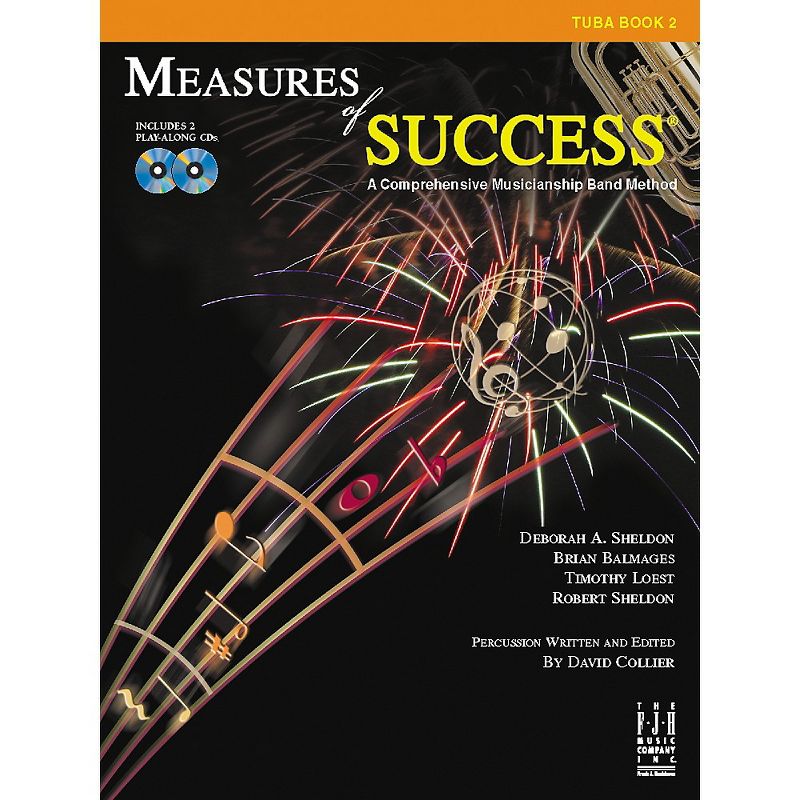
FJH Music Measures of Success Percussion Book 2
Dimensions (Overall): 11.7 inches (L), .3 inches (H) x 8.7 inches (W)Weight: 1.35 poundsGenre: Method booksCompatible With: Specialty PercussionWarranty: No Applicable Warranty. To obtain a copy of the manufacturer's or supplier's warranty for this item prior to purchasing the item, & bull; Deborah A. Sheldon & bull; Brian Balmages & bull; Timothy Loest & bull; Robert Sheldon & bull; Percussion Written and EditedMeasures of Success Percussion Book 2, part of FJH Music's Measures of Success series, features even more tips and techniques to ignite musical curiosity, to unite conceptual knowledge with performance skills, to foster understanding of the many ways that people share and interact with music, and to assess each student's continued musical growth. Comprehensive musicianship - While there are differing opinions on starting systems, directors agree that the music itself is the most important component of a method. Every exercise in Measures of Success has been sequenced to promote optimal development through great musical content. Creative titles stimulate the imagination, musicianship challenges promote expressive playing, and special attention is paid to important concepts such as phrasing. In addition, students will enjoy full band arrangements and original compositions by renowned composers Brian Balmages and Robert Sheldon. Directors will quickly discover that this performance-based method also introduces students to critical listening, composing, conducting, music history, and other elements that bring about a deeper understanding of music. Establishing Short and Long Term Goals - Measures of Success is divided into six chapters (Opus 1 through 6). Each "Opus" is followed by a full-page assessment. Students are able to attain achievable benchmarks throughout the method, which keeps them motivated, excited, and playing their instruments. History and Cross-Curriculum Presented Together - Music history is presented simultaneously with art, literature, and world history, giving students a broad picture of social and artistic events of a certain time period. Composer pictures, artists, paintings, authors, literary works, world history, and fun facts are presented throughout the method. This strongly supports the National Standards and encourages cross-disciplinary study in music education. Best of all, it is contained in the text so directors do not need to do additional research. Encore! - Assesment Built In To Each Student Book - Following each Opus is a full page "Encore!" designed to assess skills and knowledge addressed in the Opus. This gives directors clear tools for accountability and helps measure student progress. Critical Listening-Musical examples are provided on the CDs and students are asked to critique performances, identify musical elements including time signature, tempo, articulation, and more. Each critical listening exercise is correlated with material the student has just learned. Playing By Ear-Easy tunes are introduced on the CDs and students are encouraged to learn them on their own. They can then play along with an accompaniment that is provided. Composing/Arranging-Progressive lessons move from simple composition into arranging, and students are eventually introduced to improvisation in an easy and fun way. Theory and Terminology-Written exercises reinforce a multitude of concepts. To establish a solid foundation, students are often required to look through previous chapters in addition to the current Opus. Performance-Musical exercises are designed to showcase what students have learned in each Opus. They are ideal for performance assessment and are also appropriate for home concerts. Starting Systems - Sounds Before SymbolsMany directors advocate the practice of playing before seeing notation, a critical component of getting students to connect the instrument with their ear. Book 1 accommodates this growing philosophy with the inclusion of an optional starting page that gets students playing before jumping into the challenges of notation. In no time, students are playing familiar tunes and even composing, all before encountering formal music notation

FJH Music Measures of Success E-flat Alto Saxophone Book 1
Dimensions (Overall): 12.1 inches (L), .2 inches (H) x 9.0 inches (W)Weight: .59 poundsGenre: Method booksCompatible With: SaxophoneWarranty: No Applicable Warranty. To obtain a copy of the manufacturer's or supplier's warranty for this item prior to purchasing the item, & bull; Deborah A. Sheldon & bull; Brian Balmages & bull; Timothy Loest & bull; Robert Sheldon & bull; Percussion Written and EditedMeasures of Success E-Flat Alto Saxophone Book 1 is part of FJH Music's Measures of Success series which was created to ignite musical curiosity, to unite conceptual knowledge with performance skills, to foster understanding of the many ways that people share and interact with music, and to assess each student's continued musical growth. Comprehensive musicianshipWhile there are differing opinions on starting systems, directors agree that the music itself is the most important component of a method. Every exercise in Measures of Success has been sequenced to promote optimal development through great musical content. Creative titles stimulate the imagination, musicianship challenges promote expressive playing, and special attention is paid to important concepts such as phrasing. In addition, students will enjoy full band arrangements and original compositions by renowned composers Brian Balmages and Robert Sheldon. Directors will quickly discover that this performance-based method also introduces students to critical listening, composing, conducting, music history, and other elements that bring about a deeper understanding of music. Establishing Short and Long Term GoalsMeasures of Success is divided into six chapters (Opus 1 through 6). Each "Opus" is followed by a full-page assessment. Students are able to attain achievable benchmarks throughout the method, which keeps them motivated, excited, and playing their instruments. History and Cross-Curriculum Presented TogetherMusic history is presented simultaneously with art, literature, and world history, giving students a broad picture of social and artistic events of a certain time period. Composer pictures, artists, paintings, authors, literary works, world history, and fun facts are presented throughout the method. This strongly supports the National Standards and encourages cross-disciplinary study in music education. Best of all, it is contained in the text so directors do not need to do additional research. Encore! - Assesment Built In To Each Student BookFollowing each Opus is a full page "Encore!" designed to assess skills and knowledge addressed in the Opus. This gives directors clear tools for accountability and helps measure student progress. Critical Listening-Musical examples are provided on the CDs and students are asked to critique performances, identify musical elements including time signature, tempo, articulation, and more. Each critical listening exercise is correlated with material the student has just learned. Playing By Ear-Easy tunes are introduced on the CDs and students are encouraged to learn them on their own. They can then play along with an accompaniment that is provided. Composing/Arranging-Progressive lessons move from simple composition into arranging, and students are eventually introduced to improvisation in an easy and fun way. Theory and Terminology-Written exercises reinforce a multitude of concepts. To establish a solid foundation, students are often required to look through previous chapters in addition to the current Opus. Performance-Musical exercises are designed to showcase what students have learned in each Opus. They are ideal for performance assessment and are also appropriate for home concerts. Starting SystemsSounds Before SymbolsMany directors advocate the practice of playing before seeing notation, a critical component of getting students to connect the instrument with their ear. Book 1 accommodates this growing philosophy with the inclusion of an optional starting page that gets students playing before jumping into the challenges of notation. In no time, students are playing familiar tunes and even composing, all before encountering formal music notation. Focus On Sequencing, Pacing, and ReinforcementThe expertise of band director Timothy Loest and Professor of Music Education Deborah A. Sheldon provides the framework of the method
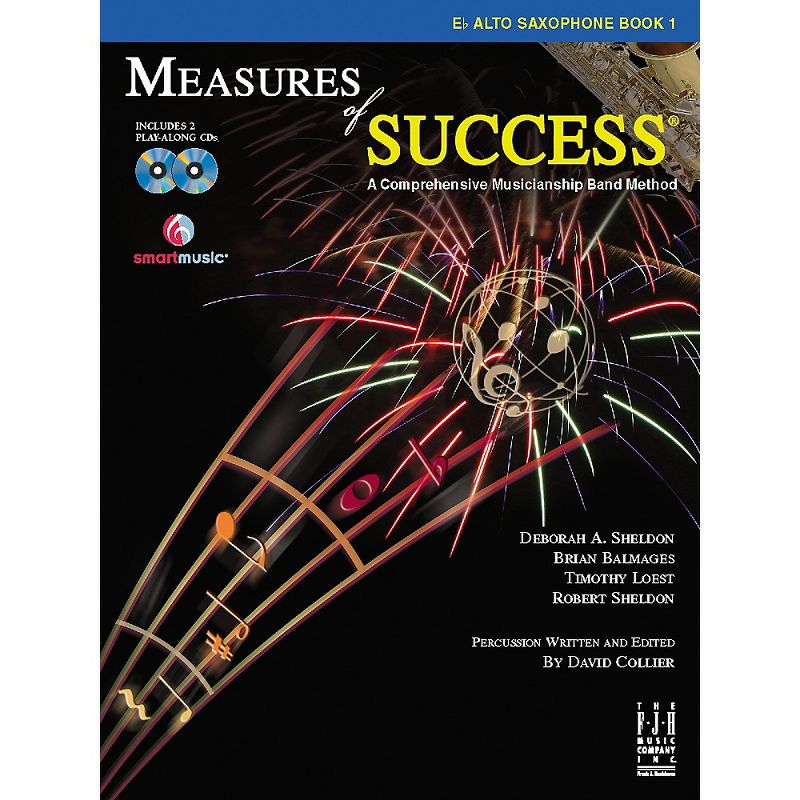
FJH Music Measures of Success Tuba Book 1
Dimensions (Overall): 12.0 inches (L), .2 inches (H) x 9.0 inches (W)Weight: .6 poundsGenre: Method booksCompatible With: TubaWarranty: No Applicable Warranty. To obtain a copy of the manufacturer's or supplier's warranty for this item prior to purchasing the item, Measures of Success is divided into six chapters (Opus 1 through 6). Each "Opus" is followed by a full-page assessment. Students are able to attain achievable benchmarks throughout the method, which keeps them motivated, excited, and playing their instruments. Music history is presented simultaneously with art, literature, and world history, giving students a broad picture of social and artistic events of a certain time period. Composer pictures, artists, paintings, authors, literary works, world history, and fun facts are presented throughout the method. This strongly supports the National Standards and encourages cross-disciplinary study in music education. Best of all, it is contained in the text so directors do not need to do additional research. PLAY-ALONG CDS: A NEW LEVEL OF ACCOMPANIMENT - All exercises are played twice by professional musicians-first with the student line, then the accompaniment alone. Accompaniments include live musicians, incredible orchestrations, and a wide variety of styles including concert band, full orchestra, rock, Latin, jazz, funk, country, electronic, and world music. Classical pieces are presented with accompaniments that put them in their original context. Percussion-specific CDs let percussionists hear a characteristic sound of every Instrument while the winds are moved into the background. Book 1: - Unique chapter organization provides a goal-oriented format6 full-page assessments include:Critical Listening Playing By Ear Theory and Terminology Composing / Arranging PerformanceWealth of classical and world music representing over 20 composers and 17 countries15 pieces for full bandDuets, rounds, & 2 solos with piano accompaniment2 Play-Along CDs feature demo and performancetracks with professional musiciansFeatured in SmartMusic, the award-winning learning softwareCorrelates with art and world historyIncorporates the National Standards for MusicEducationAdditional features including conducting, rhythm review, clapping exercises, scales, and more!
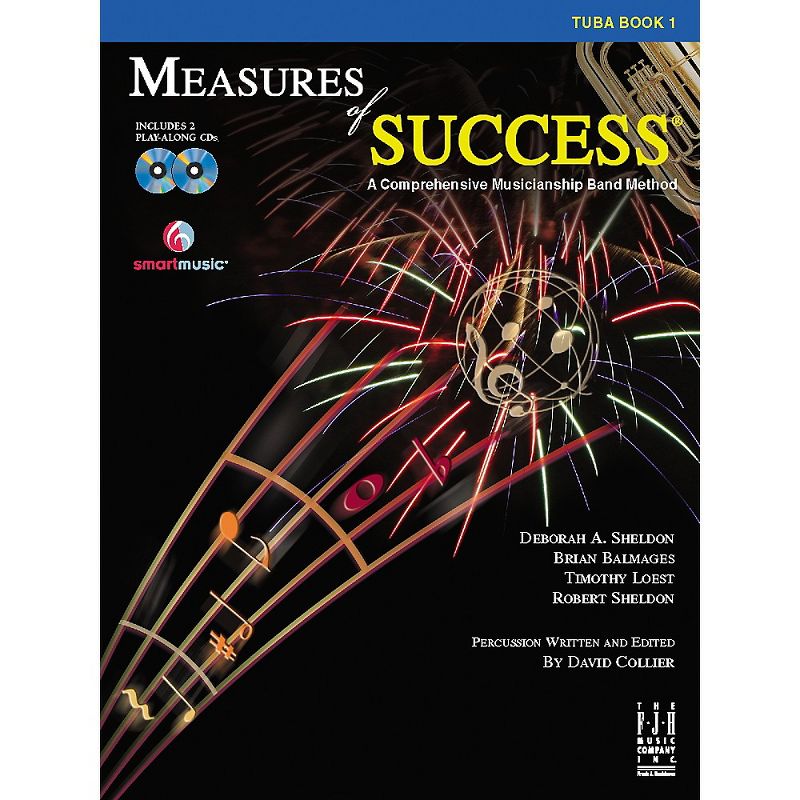
FJH Music Measures of Success Trumpet Book 1
Dimensions (Overall): 11.7 inches (L), .5 inches (H) x 8.6 inches (W)Weight: .5 poundsGenre: Method booksCompatible With: Most TrumpetsWarranty: No Applicable Warranty. To obtain a copy of the manufacturer's or supplier's warranty for this item prior to purchasing the item, Measures of Success is divided into six chapters (Opus 1 through 6). Each "Opus" is followed by a full-page assessment. Students are able to attain achievable benchmarks throughout the method, which keeps them motivated, excited, and playing their instruments. Music history is presented simultaneously with art, literature, and world history, giving students a broad picture of social and artistic events of a certain time period. Composer pictures, artists, paintings, authors, literary works, world history, and fun facts are presented throughout the method. This strongly supports the National Standards and encourages cross-disciplinary study in music education. Best of all, it is contained in the text so directors do not need to do additional research. PLAY-ALONG CDS: A NEW LEVEL OF ACCOMPANIMENT - All exercises are played twice by professional musicians-first with the student line, then the accompaniment alone. Accompaniments include live musicians, incredible orchestrations, and a wide variety of styles including concert band, full orchestra, rock, Latin, jazz, funk, country, electronic, and world music. Classical pieces are presented with accompaniments that put them in their original context. Percussion-specific CDs let percussionists hear a characteristic sound of every Instrument while the winds are moved into the background. Book 1: - Unique chapter organization provides a goal-oriented format6 full-page assessments include:Critical Listening Playing By Ear Theory and Terminology Composing / Arranging PerformanceWealth of classical and world music representing over 20 composers and 17 countries15 pieces for full bandDuets, rounds, & 2 solos with piano accompaniment2 Play-Along CDs feature demo and performancetracks with professional musiciansFeatured in SmartMusic, the award-winning learning softwareCorrelates with art and world historyIncorporates the National Standards for MusicEducationAdditional features including conducting, rhythm review, clapping exercises, scales, and more!

FJH Music Measures of Success Oboe Book 1
Dimensions (Overall): 12.2 inches (L), .3 inches (H) x 9.1 inches (W)Weight: .65 poundsGenre: Method booksCompatible With: OboeWarranty: No Applicable Warranty. To obtain a copy of the manufacturer's or supplier's warranty for this item prior to purchasing the item, & bull; Deborah A. Sheldon & bull; Brian Balmages & bull; Timothy Loest & bull; Robert Sheldon & bull; Percussion Written and EditedMeasures of Success Oboe Book 1 is part of FJH Music's Measures of Success series which was created to ignite musical curiosity, to unite conceptual knowledge with performance skills, to foster understanding of the many ways that people share and interact with music, and to assess each student's continued musical growth. Comprehensive musicianship - While there are differing opinions on starting systems, directors agree that the music itself is the most important component of a method. Every exercise in Measures of Success has been sequenced to promote optimal development through great musical content. Creative titles stimulate the imagination, musicianship challenges promote expressive playing, and special attention is paid to important concepts such as phrasing. In addition, students will enjoy full band arrangements and original compositions by renowned composers Brian Balmages and Robert Sheldon. Directors will quickly discover that this performance-based method also introduces students to critical listening, composing, conducting, music history, and other elements that bring about a deeper understanding of music. Establishing Short and Long Term Goals - Measures of Success is divided into six chapters (Opus 1 through 6). Each "Opus" is followed by a full-page assessment. Students are able to attain achievable benchmarks throughout the method, which keeps them motivated, excited, and playing their instruments. History and Cross-Curriculum Presented Together - Music history is presented simultaneously with art, literature, and world history, giving students a broad picture of social and artistic events of a certain time period. Composer pictures, artists, paintings, authors, literary works, world history, and fun facts are presented throughout the method. This strongly supports the National Standards and encourages cross-disciplinary study in music education. Best of all, it is contained in the text so directors do not need to do additional research. Encore! - Assesment Built In To Each Student Book - Following each Opus is a full page "Encore!" designed to assess skills and knowledge addressed in the Opus. This gives directors clear tools for accountability and helps measure student progress. Critical Listening-Musical examples are provided on the CDs and students are asked to critique performances, identify musical elements including time signature, tempo, articulation, and more. Each critical listening exercise is correlated with material the student has just learned. Playing By Ear-Easy tunes are introduced on the CDs and students are encouraged to learn them on their own. They can then play along with an accompaniment that is provided. Composing/Arranging-Progressive lessons move from simple composition into arranging, and students are eventually introduced to improvisation in an easy and fun way. Theory and Terminology-Written exercises reinforce a multitude of concepts. To establish a solid foundation, students are often required to look through previous chapters in addition to the current Opus. Performance-Musical exercises are designed to showcase what students have learned in each Opus. They are ideal for performance assessment and are also appropriate for home concerts. Starting Systems - Sounds Before SymbolsMany directors advocate the practice of playing before seeing notation, a critical component of getting students to connect the instrument with their ear. Book 1 accommodates this growing philosophy with the inclusion of an optional starting page that gets students playing before jumping into the challenges of notation. In no time, students are playing familiar tunes and even composing, all before encountering formal music notation. Focus On Sequencing, Pacing, and ReinforcementThe expertise of band director Timothy Loest and Professor of Music Education Deborah A
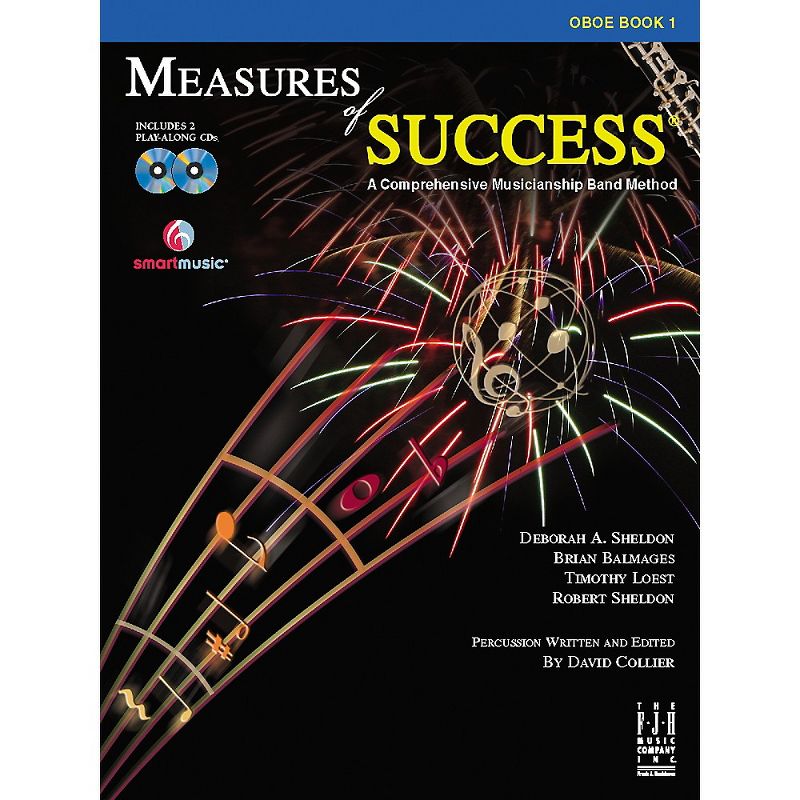
FJH Music New Directions For Strings, Cello Book 1
Dimensions (Overall): 12.0 inches (L), .25 inches (H) x 9.0 inches (W)Weight: .6 poundsGenre: Method booksCompatible With: CelloWarranty: No Applicable Warranty. To obtain a copy of the manufacturer's or supplier's warranty for this item prior to purchasing the item, & bull; Based on more than 100 years of combined teaching experience & bull; Written by a team of pedagogues representing each of the four stringed instruments & bull; Supplemental music by Soon Hee Newbold and Elliot Del Borgo & bull; Includes 2 Play-Along CDs with each student bookThe FJH Music Company is proud to present Books 1 and 2 of New Directions for Strings, the first method ever written by a team of pedagogues representing each of the four stringed instruments. With more than 100 years of combined teaching experience, the authors of New Directions for Strings explore many new directions, including equal integration of all the instruments, a tetrachord-based approach to support proper development of the left hand, and ensemble opportunities that occur throughout the book.
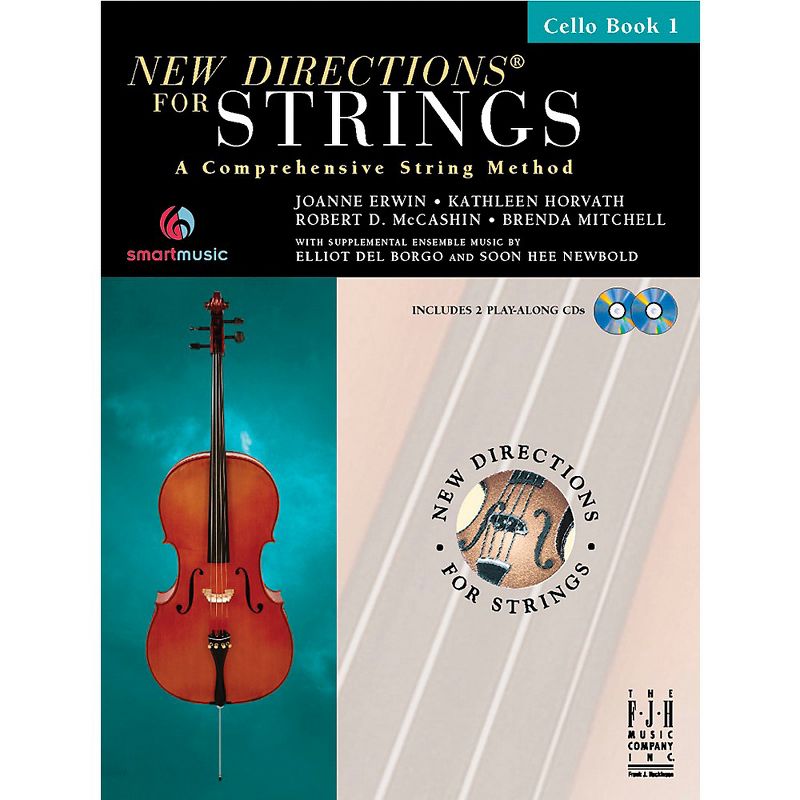
FJH Music Measures of Success Teacher's Manual Book 1
Dimensions (Overall): 12.1 inches (L), .9 inches (H) x 9.6 inches (W)Weight: 2.7 poundsGenre: Method booksCompatible With: ConductorWarranty: No Applicable Warranty. To obtain a copy of the manufacturer's or supplier's warranty for this item prior to purchasing the item, & bull; Deborah A. Sheldon & bull; Brian Balmages & bull; Timothy Loest & bull; Robert Sheldon & bull; Percussion Written and EditedMeasures of Success Teacher's Manual Book 1 is part of FJH Music's Measures of Success series which was created to ignite musical curiosity, to unite conceptual knowledge with performance skills, to foster understanding of the many ways that people share and interact with music, and to assess each student's continued musical growth. Comprehensive musicianship - While there are differing opinions on starting systems, directors agree that the music itself is the most important component of a method. Every exercise in Measures of Success has been sequenced to promote optimal development through great musical content. Creative titles stimulate the imagination, musicianship challenges promote expressive playing, and special attention is paid to important concepts such as phrasing. In addition, students will enjoy full band arrangements and original compositions by renowned composers Brian Balmages and Robert Sheldon. Directors will quickly discover that this performance-based method also introduces students to critical listening, composing, conducting, music history, and other elements that bring about a deeper understanding of music. Establishing Short and Long Term Goals - Measures of Success is divided into six chapters (Opus 1 through 6). Each "Opus" is followed by a full-page assessment. Students are able to attain achievable benchmarks throughout the method, which keeps them motivated, excited, and playing their instruments. History and Cross-Curriculum Presented Together - Music history is presented simultaneously with art, literature, and world history, giving students a broad picture of social and artistic events of a certain time period. Composer pictures, artists, paintings, authors, literary works, world history, and fun facts are presented throughout the method. This strongly supports the National Standards and encourages cross-disciplinary study in music education. Best of all, it is contained in the text so directors do not need to do additional research. Encore! - Assesment Built In To Each Student Book - Following each Opus is a full page "Encore!" designed to assess skills and knowledge addressed in the Opus. This gives directors clear tools for accountability and helps measure student progress. Critical Listening-Musical examples are provided on the CDs and students are asked to critique performances, identify musical elements including time signature, tempo, articulation, and more. Each critical listening exercise is correlated with material the student has just learned. Playing By Ear-Easy tunes are introduced on the CDs and students are encouraged to learn them on their own. They can then play along with an accompaniment that is provided. Composing/Arranging-Progressive lessons move from simple composition into arranging, and students are eventually introduced to improvisation in an easy and fun way. Theory and Terminology-Written exercises reinforce a multitude of concepts. To establish a solid foundation, students are often required to look through previous chapters in addition to the current Opus. Performance-Musical exercises are designed to showcase what students have learned in each Opus. They are ideal for performance assessment and are also appropriate for home concerts. Starting Systems - Sounds Before SymbolsMany directors advocate the practice of playing before seeing notation, a critical component of getting students to connect the instrument with their ear. Book 1 accommodates this growing philosophy with the inclusion of an optional starting page that gets students playing before jumping into the challenges of notation. In no time, students are playing familiar tunes and even composing, all before encountering formal music notation. Focus On Sequencing, Pacing, and ReinforcementThe expertise of band director Timothy Loest and Professor of Music Education Deborah A
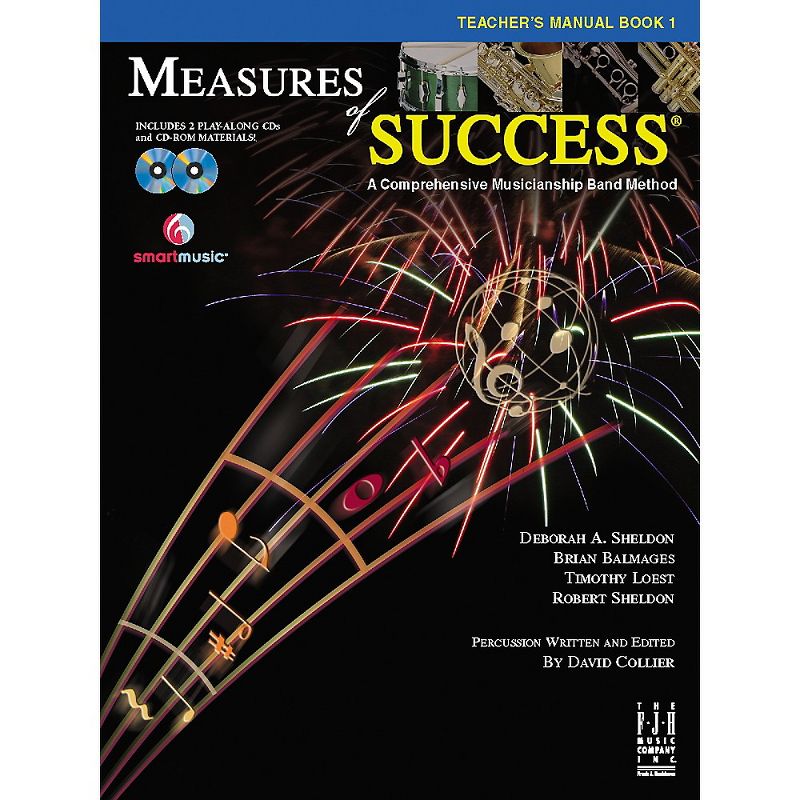
FJH Music New Directions For Strings, Violin Book 1
Dimensions (Overall): 11.7 inches (L), .5 inches (H) x 8.7 inches (W)Weight: .7 poundsGenre: Method booksCompatible With: ViolinWarranty: No Applicable Warranty. To obtain a copy of the manufacturer's or supplier's warranty for this item prior to purchasing the item, & bull; By Joanne Erwin, Kathleen Horvath, Robert D. McCashin, Brenda Mitchell & bull; Supplemental music by Soon Hee Newbold and Elliot Del Borgo & bull; Based on more than 100 years of combined teaching experience & bull; Written by a team of pedagogues representing each of the four stringed instruments & bull; Includes 2 Play-Along CDs with each student bookNew Directions for Strings, Violin Book 1 is the first method ever written by a team of pedagogues representing each of the four stringed instruments. With more than 100 years of combined teaching experience, the authors of New Directions for Strings, Violin Book 1 explore many new directions, including equal integration of all the instruments, a tetrachord-based approach to support proper development of the left hand, and ensemble opportunities that occur throughout the book. Unique characteristics of New Directions For Strings include:Posture directions specific to each instrumentDevelopment of basic performance competencies: - music notation and composition - aural skills, dictation and improvisation - music theoryA Tetrachord-based approach to support proper development of the left-hand frame and finger patterns relative to keysEnsemble opportunities early in the bookSystematic experience with the National StandardsTwo contrasting solos for each instrumentIncludes additional resources for teachers: pedagogical information, teacher tips, assessment materials, organizational resources
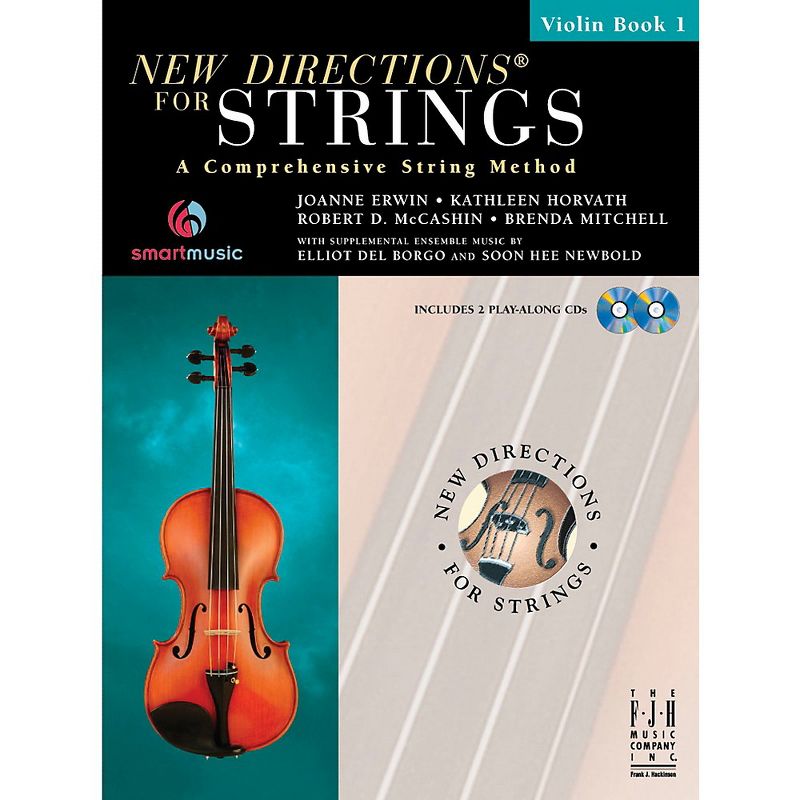
FJH Music Measures of Success Baritone B.C. Book 2
Dimensions (Overall): 12.0 inches (L), .2 inches (H) x 9.0 inches (W)Weight: .59 poundsGenre: Method booksCompatible With: Baritone HornWarranty: No Applicable Warranty. To obtain a copy of the manufacturer's or supplier's warranty for this item prior to purchasing the item, & bull; Deborah A. Sheldon & bull; Brian Balmages & bull; Timothy Loest & bull; Robert Sheldon & bull; Percussion Written and EditedMeasures of Success Baritone B.C. Book 2, part of FJH Music's Measures of Success series, features even more tips and techniques to ignite musical curiosity, to unite conceptual knowledge with performance skills, to foster understanding of the many ways that people share and interact with music, and to assess each student's continued musical growth. Comprehensive musicianship - While there are differing opinions on starting systems, directors agree that the music itself is the most important component of a method. Every exercise in Measures of Success has been sequenced to promote optimal development through great musical content. Creative titles stimulate the imagination, musicianship challenges promote expressive playing, and special attention is paid to important concepts such as phrasing. In addition, students will enjoy full band arrangements and original compositions by renowned composers Brian Balmages and Robert Sheldon. Directors will quickly discover that this performance-based method also introduces students to critical listening, composing, conducting, music history, and other elements that bring about a deeper understanding of music. Establishing Short and Long Term Goals - Measures of Success is divided into six chapters (Opus 1 through 6). Each "Opus" is followed by a full-page assessment. Students are able to attain achievable benchmarks throughout the method, which keeps them motivated, excited, and playing their instruments. History and Cross-Curriculum Presented Together - Music history is presented simultaneously with art, literature, and world history, giving students a broad picture of social and artistic events of a certain time period. Composer pictures, artists, paintings, authors, literary works, world history, and fun facts are presented throughout the method. This strongly supports the National Standards and encourages cross-disciplinary study in music education. Best of all, it is contained in the text so directors do not need to do additional research. Encore! - Assesment Built In To Each Student Book - Following each Opus is a full page "Encore!" designed to assess skills and knowledge addressed in the Opus. This gives directors clear tools for accountability and helps measure student progress. Critical Listening-Musical examples are provided on the CDs and students are asked to critique performances, identify musical elements including time signature, tempo, articulation, and more. Each critical listening exercise is correlated with material the student has just learned. Playing By Ear-Easy tunes are introduced on the CDs and students are encouraged to learn them on their own. They can then play along with an accompaniment that is provided. Composing/Arranging-Progressive lessons move from simple composition into arranging, and students are eventually introduced to improvisation in an easy and fun way. Theory and Terminology-Written exercises reinforce a multitude of concepts. To establish a solid foundation, students are often required to look through previous chapters in addition to the current Opus. Performance-Musical exercises are designed to showcase what students have learned in each Opus. They are ideal for performance assessment and are also appropriate for home concerts. Starting Systems - Sounds Before SymbolsMany directors advocate the practice of playing before seeing notation, a critical component of getting students to connect the instrument with their ear. Book 1 accommodates this growing philosophy with the inclusion of an optional starting page that gets students playing before jumping into the challenges of notation. In no time, students are playing familiar tunes and even composing, all before encountering formal music notation
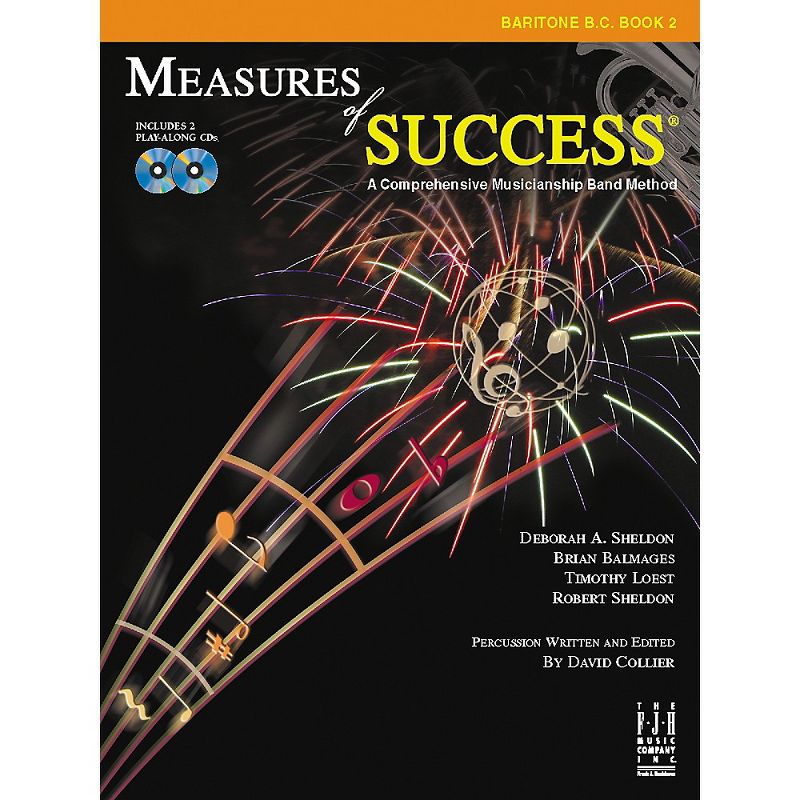
FJH Music Measures of Success Flute Book 1
Dimensions (Overall): 11.7 inches (L), .4 inches (H) x 7.7 inches (W)Weight: .57 poundsGenre: Method booksCompatible With: FluteWarranty: No Applicable Warranty. To obtain a copy of the manufacturer's or supplier's warranty for this item prior to purchasing the item, Measures of Success is divided into six chapters (Opus 1 through 6). Each "Opus" is followed by a full-page assessment. Students are able to attain achievable benchmarks throughout the method, which keeps them motivated, excited, and playing their instruments. Music history is presented simultaneously with art, literature, and world history, giving students a broad picture of social and artistic events of a certain time period. Composer pictures, artists, paintings, authors, literary works, world history, and fun facts are presented throughout the method. This strongly supports the National Standards and encourages cross-disciplinary study in music education. Best of all, it is contained in the text so directors do not need to do additional research. PLAY-ALONG CDS: A NEW LEVEL OF ACCOMPANIMENT - All exercises are played twice by professional musicians-first with the student line, then the accompaniment alone. Accompaniments include live musicians, incredible orchestrations, and a wide variety of styles including concert band, full orchestra, rock, Latin, jazz, funk, country, electronic, and world music. Classical pieces are presented with accompaniments that put them in their original context. Percussion-specific CDs let percussionists hear a characteristic sound of every Instrument while the winds are moved into the background. Book 1: - Unique chapter organization provides a goal-oriented format6 full-page assessments include:Critical Listening Playing By Ear Theory and Terminology Composing / Arranging PerformanceWealth of classical and world music representing over 20 composers and 17 countries15 pieces for full bandDuets, rounds, & 2 solos with piano accompaniment2 Play-Along CDs feature demo and performancetracks with professional musiciansFeatured in SmartMusic, the award-winning learning softwareCorrelates with art and world historyIncorporates the National Standards for MusicEducationAdditional features including conducting, rhythm review, clapping exercises, scales, and more!

FJH Music Measures of Success Flute Book 2
Dimensions (Overall): 12.0 inches (L), .2 inches (H) x 9.0 inches (W)Weight: .58 poundsGenre: Method booksCompatible With: FluteWarranty: No Applicable Warranty. To obtain a copy of the manufacturer's or supplier's warranty for this item prior to purchasing the item, & bull; Deborah A. Sheldon & bull; Brian Balmages & bull; Timothy Loest & bull; Robert Sheldon & bull; Percussion Written and EditedMeasures of Success Flute Book 2, part of FJH Music's Measures of Success series, features even more tips and techniques to ignite musical curiosity, to unite conceptual knowledge with performance skills, to foster understanding of the many ways that people share and interact with music, and to assess each student's continued musical growth. Comprehensive musicianship - While there are differing opinions on starting systems, directors agree that the music itself is the most important component of a method. Every exercise in Measures of Success has been sequenced to promote optimal development through great musical content. Creative titles stimulate the imagination, musicianship challenges promote expressive playing, and special attention is paid to important concepts such as phrasing. In addition, students will enjoy full band arrangements and original compositions by renowned composers Brian Balmages and Robert Sheldon. Directors will quickly discover that this performance-based method also introduces students to critical listening, composing, conducting, music history, and other elements that bring about a deeper understanding of music. Establishing Short and Long Term Goals - Measures of Success is divided into six chapters (Opus 1 through 6). Each "Opus" is followed by a full-page assessment. Students are able to attain achievable benchmarks throughout the method, which keeps them motivated, excited, and playing their instruments. History and Cross-Curriculum Presented Together - Music history is presented simultaneously with art, literature, and world history, giving students a broad picture of social and artistic events of a certain time period. Composer pictures, artists, paintings, authors, literary works, world history, and fun facts are presented throughout the method. This strongly supports the National Standards and encourages cross-disciplinary study in music education. Best of all, it is contained in the text so directors do not need to do additional research. Encore! - Assesment Built In To Each Student Book - Following each Opus is a full page "Encore!" designed to assess skills and knowledge addressed in the Opus. This gives directors clear tools for accountability and helps measure student progress. Critical Listening-Musical examples are provided on the CDs and students are asked to critique performances, identify musical elements including time signature, tempo, articulation, and more. Each critical listening exercise is correlated with material the student has just learned. Playing By Ear-Easy tunes are introduced on the CDs and students are encouraged to learn them on their own. They can then play along with an accompaniment that is provided. Composing/Arranging-Progressive lessons move from simple composition into arranging, and students are eventually introduced to improvisation in an easy and fun way. Theory and Terminology-Written exercises reinforce a multitude of concepts. To establish a solid foundation, students are often required to look through previous chapters in addition to the current Opus. Performance-Musical exercises are designed to showcase what students have learned in each Opus. They are ideal for performance assessment and are also appropriate for home concerts. Starting Systems - Sounds Before SymbolsMany directors advocate the practice of playing before seeing notation, a critical component of getting students to connect the instrument with their ear. Book 1 accommodates this growing philosophy with the inclusion of an optional starting page that gets students playing before jumping into the challenges of notation. In no time, students are playing familiar tunes and even composing, all before encountering formal music notation
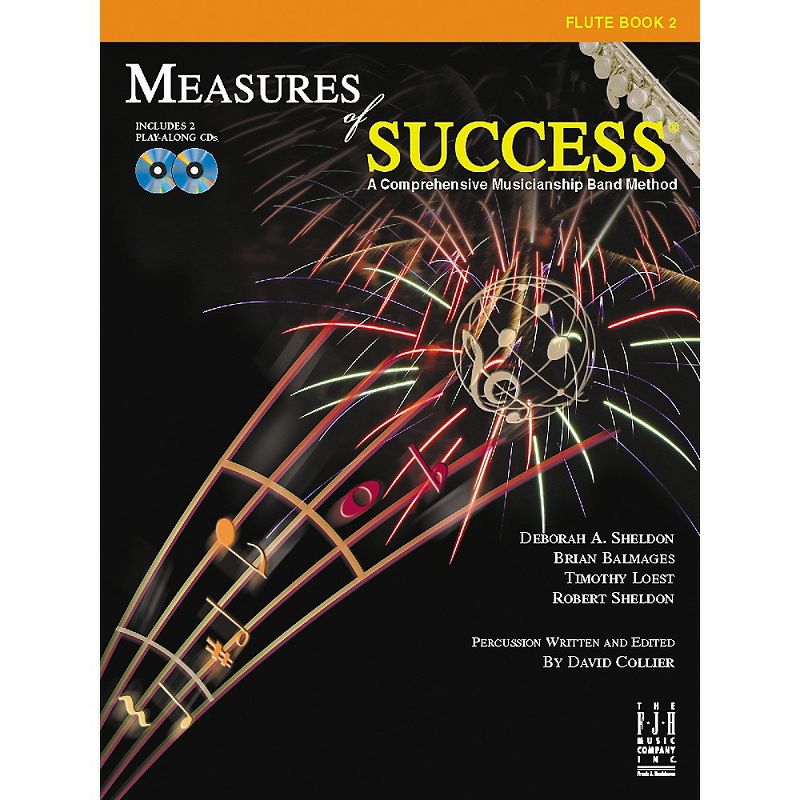
FJH Music Measures of Success Bass Clarinet Book 2
Dimensions (Overall): 12.0 inches (L), .2 inches (H) x 9.0 inches (W)Weight: .6 poundsGenre: Method booksCompatible With: ClarinetWarranty: No Applicable Warranty. To obtain a copy of the manufacturer's or supplier's warranty for this item prior to purchasing the item, Measures of Success is divided into six chapters (Opus 1 through 6). Each "Opus" is followed by a full-page assessment. Students are able to attain achievable benchmarks throughout the method, which keeps them motivated, excited, and playing their instruments. Music history is presented simultaneously with art, literature, and world history, giving students a broad picture of social and artistic events of a certain time period. Composer pictures, artists, paintings, authors, literary works, world history, and fun facts are presented throughout the method. This strongly supports the National Standards and encourages cross-disciplinary study in music education. Best of all, it is contained in the text so directors do not need to do additional research. Critical ListeningMusical examples are provided on the CDs and students are asked to critique performances, identify musical elements including time signature, tempo, articulation, and more. Each critical listening exercise is correlated with material the student hasjust learned. Playing By Ear - Easy tunes are introduced on the CDs and students are encouraged to learn them on their own. They can then play along with an accompaniment that is provided. Composing / ArrangingProgressive lessons move from simple composition into arranging, and students are eventually introduced to improvisation in an easy and fun way. Theory and Terminology - Written exercises reinforce a multitude of concepts. To establish a solid foundation, students are often required to look through previous chapters in addition to the current Opus. PLAY-ALONG CDS: A NEW LEVEL OF ACCOMPANIMENT - All exercises are played twice by professional musicians-first with the student line, then the accompaniment alone. Accompaniments include live musicians, incredible orchestrations, and a wide variety of styles including concert band, full orchestra, rock, Latin, jazz, funk, country, electronic, and world music. Classical pieces are presented with accompaniments that put them in their original context. Percussion-specific CDs let percussionists hear a characteristic sound of every Instrument while the winds are moved into the background. NEW FEATURES IN BOOK 2 - Review - a comprehensive Recapitulation chapter that reviews material from Book 1Sight Reading - correlated with each OpusWarm-ups - a full page of long tones and choralesfor individual, section, or full band useImprovisation - five improvisation studies with flexibleperformance optionsWorld music - representing music from 20 countriesacross the globeComposers - over 35 composers, including 14 newfeatured composersNew cross-curricular opportunities - ties to many literary works included in school curricula
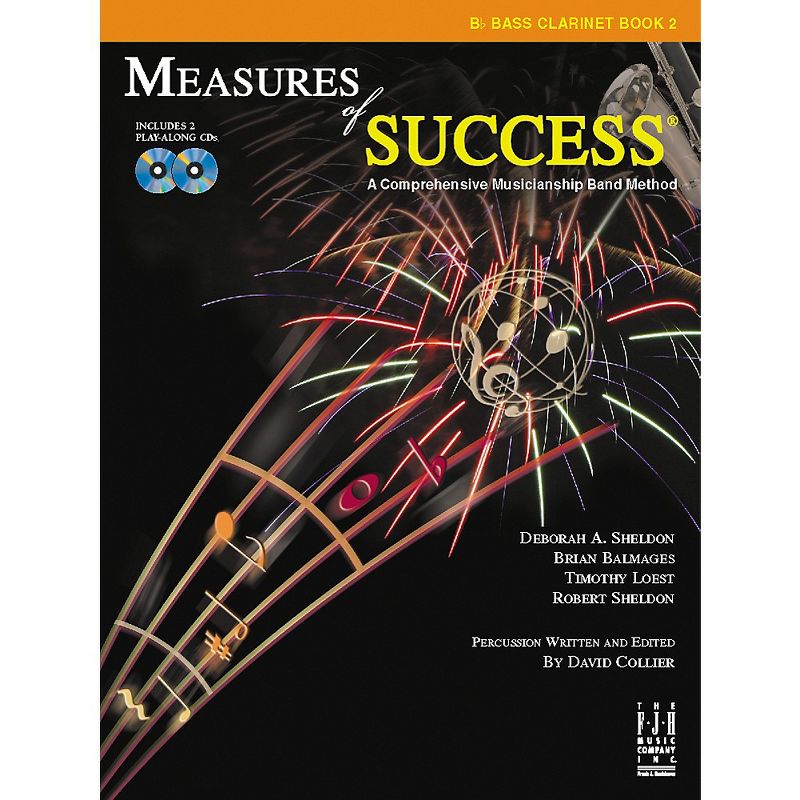
FJH Music Measures of Success Percussion Book 1
Dimensions (Overall): 11.8 inches (L), .7 inches (H) x 8.7 inches (W)Weight: 1.35 poundsGenre: Method booksCompatible With: Specialty PercussionWarranty: No Applicable Warranty. To obtain a copy of the manufacturer's or supplier's warranty for this item prior to purchasing the item, Measures of Success is divided into six chapters (Opus 1 through 6). Each "Opus" is followed by a full-page assessment. Students are able to attain achievable benchmarks throughout the method, which keeps them motivated, excited, and playing their instruments. Music history is presented simultaneously with art, literature, and world history, giving students a broad picture of social and artistic events of a certain time period. Composer pictures, artists, paintings, authors, literary works, world history, and fun facts are presented throughout the method. This strongly supports the National Standards and encourages cross-disciplinary study in music education. Best of all, it is contained in the text so directors do not need to do additional research. PLAY-ALONG CDS: A NEW LEVEL OF ACCOMPANIMENT - All exercises are played twice by professional musicians-first with the student line, then the accompaniment alone. Accompaniments include live musicians, incredible orchestrations, and a wide variety of styles including concert band, full orchestra, rock, Latin, jazz, funk, country, electronic, and world music. Classical pieces are presented with accompaniments that put them in their original context. Percussion-specific CDs let percussionists hear a characteristic sound of every Instrument while the winds are moved into the background. Book 1: - Unique chapter organization provides a goal-oriented format6 full-page assessments include:Critical Listening Playing By Ear Theory and Terminology Composing / Arranging PerformanceWealth of classical and world music representing over 20 composers and 17 countries15 pieces for full bandDuets, rounds, & 2 solos with piano accompaniment2 Play-Along CDs feature demo and performancetracks with professional musiciansFeatured in SmartMusic, the award-winning learning softwareCorrelates with art and world historyIncorporates the National Standards for MusicEducationAdditional features including conducting, rhythm review, clapping exercises, scales, and more!
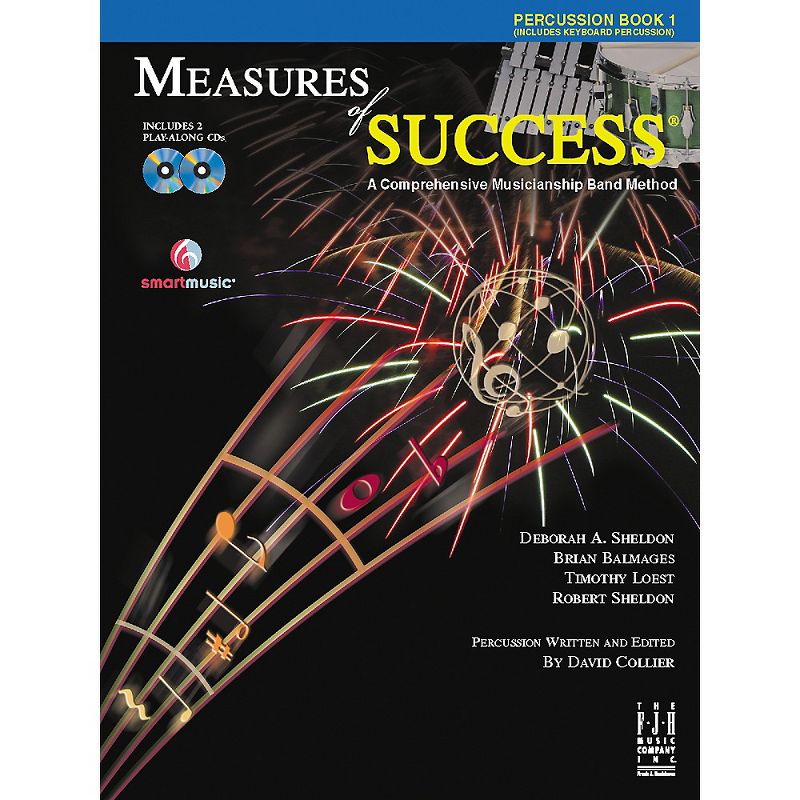
FJH Music Measures of Success Clarinet Book 2
Dimensions (Overall): 11.7 inches (L), .4 inches (H) x 8.5 inches (W)Weight: .55 poundsGenre: Method booksCompatible With: ClarinetWarranty: No Applicable Warranty. To obtain a copy of the manufacturer's or supplier's warranty for this item prior to purchasing the item, & bull; Deborah A. Sheldon & bull; Brian Balmages & bull; Timothy Loest & bull; Robert Sheldon & bull; Percussion Written and EditedMeasures of Success Clarinet Book 2, part of FJH Music's Measures of Success series, features even more tips and techniques to ignite musical curiosity, to unite conceptual knowledge with performance skills, to foster understanding of the many ways that people share and interact with music, and to assess each student's continued musical growth. Comprehensive musicianship - While there are differing opinions on starting systems, directors agree that the music itself is the most important component of a method. Every exercise in Measures of Success has been sequenced to promote optimal development through great musical content. Creative titles stimulate the imagination, musicianship challenges promote expressive playing, and special attention is paid to important concepts such as phrasing. In addition, students will enjoy full band arrangements and original compositions by renowned composers Brian Balmages and Robert Sheldon. Directors will quickly discover that this performance-based method also introduces students to critical listening, composing, conducting, music history, and other elements that bring about a deeper understanding of music. Establishing Short and Long Term Goals - Measures of Success is divided into six chapters (Opus 1 through 6). Each "Opus" is followed by a full-page assessment. Students are able to attain achievable benchmarks throughout the method, which keeps them motivated, excited, and playing their instruments. History and Cross-Curriculum Presented Together - Music history is presented simultaneously with art, literature, and world history, giving students a broad picture of social and artistic events of a certain time period. Composer pictures, artists, paintings, authors, literary works, world history, and fun facts are presented throughout the method. This strongly supports the National Standards and encourages cross-disciplinary study in music education. Best of all, it is contained in the text so directors do not need to do additional research. Encore! - Assesment Built In To Each Student Book - Following each Opus is a full page "Encore!" designed to assess skills and knowledge addressed in the Opus. This gives directors clear tools for accountability and helps measure student progress. Critical Listening-Musical examples are provided on the CDs and students are asked to critique performances, identify musical elements including time signature, tempo, articulation, and more. Each critical listening exercise is correlated with material the student has just learned. Playing By Ear-Easy tunes are introduced on the CDs and students are encouraged to learn them on their own. They can then play along with an accompaniment that is provided. Composing/Arranging-Progressive lessons move from simple composition into arranging, and students are eventually introduced to improvisation in an easy and fun way. Theory and Terminology-Written exercises reinforce a multitude of concepts. To establish a solid foundation, students are often required to look through previous chapters in addition to the current Opus. Performance-Musical exercises are designed to showcase what students have learned in each Opus. They are ideal for performance assessment and are also appropriate for home concerts. Starting Systems - Sounds Before SymbolsMany directors advocate the practice of playing before seeing notation, a critical component of getting students to connect the instrument with their ear. Book 1 accommodates this growing philosophy with the inclusion of an optional starting page that gets students playing before jumping into the challenges of notation. In no time, students are playing familiar tunes and even composing, all before encountering formal music notation
